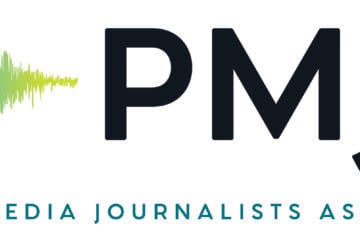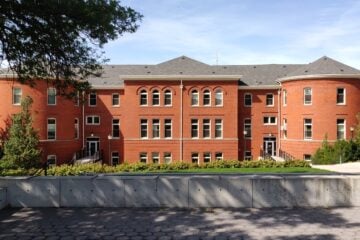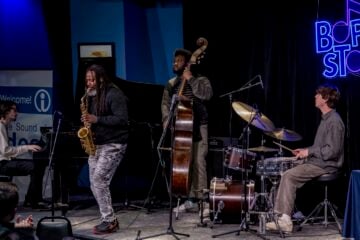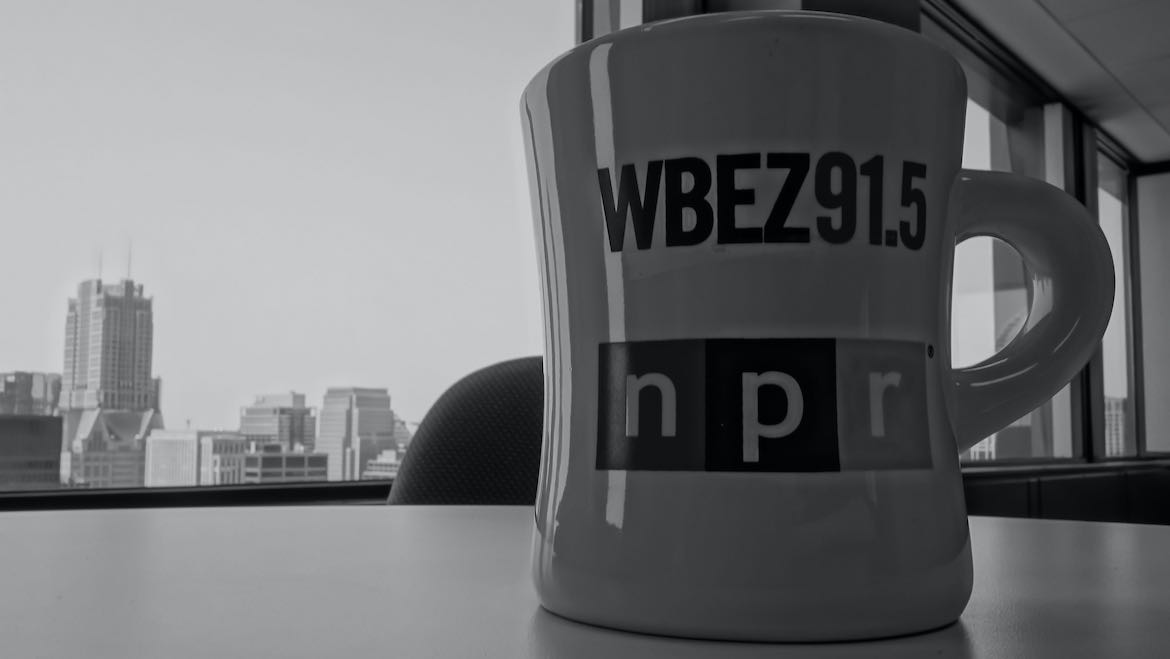How did KPLU save itself? “You ask for help”
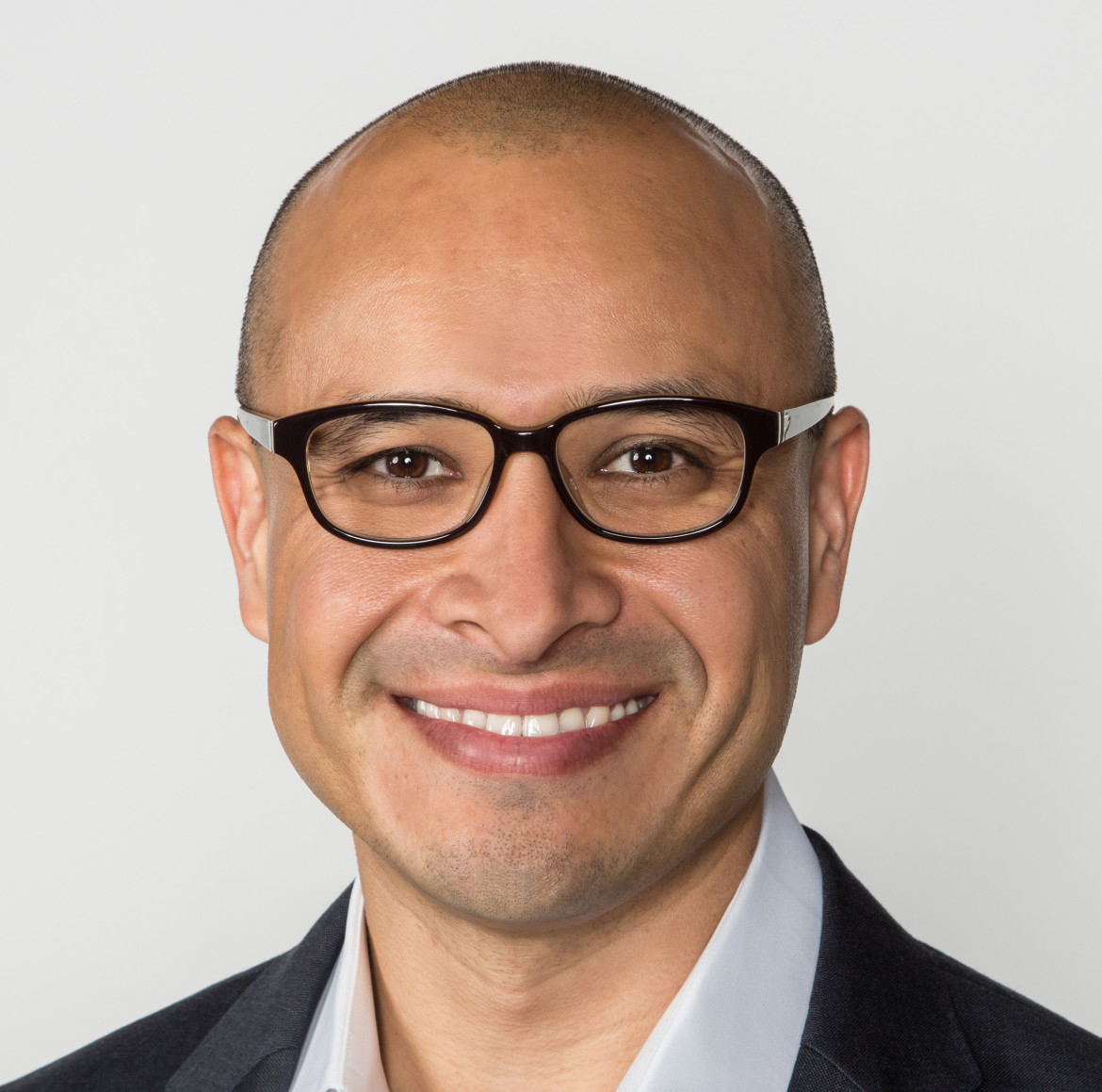
Martinez
Last fall, Matt Martinez quit his high-powered job as the line producer for NPR’s All Things Considered and took a job as head of content at KPLU in Tacoma, Wash. Two months later, his GM told him that Pacific Lutheran University planned to sell KPLU to its larger Seattle-area competitor, KUOW, and that everyone who worked at the station had better start looking for a new job. But instead, Martinez and his colleagues raised $7 million in less than six months, and KPLU bought its independence. Martinez appeared on our podcast The Pub to share what other stations can learn from KPLU’s successful bid for self-preservation. (KUOW GM Caryn Mathes was also interviewed.)
Matt Martinez, KPLU: My friends live in Tacoma — I live in Tacoma — and back in 2012 they invited me out to enjoy the mountains, enjoy the water, and I just kept coming out here. I was at one point out here three times a year. I spent about a month, a month and a half, in the area, and I totally fell in love with it.
And on top of that, I had this bigger idea about what we at the network level should be doing with our station colleagues, and that is we should be giving back. We should come to NPR, we should learn best practices there, we should compete in the big time absolutely, but then we should probably go back into the public radio system and put those practices into place. That was part of what drove me, too.
So all of that came together when I saw this posting for a director of content job at KPLU — I saw it in Current — and I thought, “Man, I can do that.” I applied for it, and luckily the folks out here agreed with me, and I moved out. Little did I know …
Adam Ragusea, Current: How long had you been there before they told you they were selling your station and all of your jobs were on the line?
Martinez: It had been two months and a week.
Current: I bet you had boxes you hadn’t unpacked yet.
Martinez: Oh yeah, absolutely. I was barely figuring out the computer systems, for God sakes. I hadn’t even figured out the on-air system. I was trying to figure out promo schedules — just like basic stuff — and then all this happened. It happened November 12; my first day was August 1, and the announcement of the sale was November 12.
Current: And what were the stages of grief that you went through?
Martinez: God, it’s the stages of grief that you would expect. It’s just like that. At first it’s complete and absolute misery. I hadn’t been here for very long, but I quickly bonded with all of my co-workers when I got here, and we went through a really, really tough time. I had just moved my life across the country.
I drove across the country with my dog, and I signed a 30-year mortgage in September, and I was very, very excited about the future — and then this happens. So I was a bit bummed, I was gutted. I spent some time with some fine locally crafted beer and tried to figure out what I was going to do next.
Current: But unlike the stages of grief that we go through when someone dies, the patient didn’t die. In fact, we now know in retrospect that the patient pulled through and is potentially going to be better than ever. But there was this moment where you got to acceptance, but then acceptance must have turned to resolve at some point like, “OK, this is not going to be what I thought it was going to be at all, but here we go, let’s do this.” When did that happen for you?
Martinez: Right before Thanksgiving we had a final staff meeting — what we thought would be a final staff meeting — with Joey Cohn, our general manager. He came in and he said to everyone. “Look, best advice I have for you right now: Start looking for other jobs. It’s over. It’s done. We have the final meeting with PLU.” We were trying to convince them to allow us to buy the station as a community organization, and they said no. And he basically told the staff that it was all over.
A week later it all turned around, and they said that they were going to allow a community organization six months to raise $7 million. That is when we jumped into action; that decision happened because the community rose up and said, “We don’t want this to happen! Had we known about this, we would have tried to do something about it. You have to give us the chance.” There was a giant community meeting in downtown Seattle, middle of the day — I forgot which day it was; it might have been a Tuesday or Wednesday — of the community advisory council of the station, and we had to move to a ballroom in a downtown hotel because hundreds of people wanted to attend and express their frustration and anger around the whole thing. That set the ball rolling, and I think both UW and PLU heard that and made the decision to allow our group to raise the money.
Current: So how does a little bitty station raise $7 million in … how many months?
Martinez: They gave us six months, but we did it in about five and a half months.
Current: How do you do that?
Martinez: Well, you reach out to the community and you ask them for help — it’s as simple as that — and that’s what we did. It wasn’t just going on the air and saying, “We have this existential crisis and we need your money.” It was really engaging with the community.
So we set up community meetings all over western Washington, from as far north as Bellingham — which is pretty close to the Canadian border — all the way down to Olympia and points in between.
We invited people to come in to hear our case for why we should survive and why we need their support, and then have them ask questions about the station, ask questions about our finances, our programming, anything that they wanted. We had a dialogue, and those meetings spawned other meetings, other community events from house parties to concerts to auctions. There was an entire downtown that shut down for an afternoon just for a KPLU fundraiser — Poulsbo, Wash. — and we had more than 85 community events, most organized by the community that were launched because of those initial community meetings.
That’s how we did it, little by little. We didn’t get one person to walk in with a million-dollar check. Not one. I think our biggest contribution was $250,000. That is a lot of money — I’m not putting that down in any kind of way. It’s a lot of money.
Current: But in a region like yours, where the richest human in the universe lives … there are people who could have swept in with the big golden check, and that didn’t happen.
Martinez: Absolutely, absolutely. It was a joke around here: If we had a nickel for every time someone asked us “Have you asked Bill Gates?” we would pretty much be done by now.
But you’re right: It’s a really affluent part of the country, and somebody could have waltzed in and basically could have written a check for the entire thing. But that didn’t happen. This was very much community-based. It was more than 24,000 donations from more than 18,000 people, which means many, many people gave twice or even three times.
Current: Is there a lesson that other stations can learn from how you guys did this campaign, or is this just a sui generis situation where there’s nothing very fun about saying, “Hey, give us money so that we can maintain the status quo for another quarter.” Whereas there’s a lot that’s just fun and crackly about saying, “Hey, we’re in an existential crisis, save our lives and let’s wrest this community resource back from The Man and we’ll finally have a station all our own.” Right? Maybe there’s no other situation that’s like that that has that kind of juice.
Martinez: I think watching you could see it as fun, but I will say that yes, absolutely, that had a lot to do with it. When you have an existential crisis, when you’re faced with nonexistence, of course, absolutely, the people are going to rally around that. But at the same time I think there are really wonderful lessons that other public radio stations can learn from what we did, and all of it revolves around community engagement. Go out and talk to your listeners about what they’re hearing, what they want. Have community meetings, have regular community meetings, not just like a board that you devise. Open it up, bring people in and just have a bull session.
Current: Did you guys go out to people? Did you try to go to a diverse set of neighborhoods, or did you invite them into your facility? What did you do?
Martinez: We got facilities all over the region to donate space; that’s how that’s how we did it. We are at a library in Bellingham. We are at the Northwest African American Museum in Seattle. We are at a jazz club in Bellevue. We are at a little restaurant’s hall space in Olympia. It was all kinds of different places that we had these meetings, and we invited them to come in and have that conversation. Hundreds of people showed up to each event and asked really, really smart questions about the station, about what we want to do with the station, about why we wanted to survive. That really engaged the community in a really meaningful way. This is more than putting on a program. This is more like a live version of a show that you do or a town hall forum. I think those absolutely you need to do.
But you also need to just explain the vision of the station. People have lots of questions about that.
Current: What was the format of the events? Was there a program? Was it just Joey getting up and saying, “Hey, folks, you heard that… What do you think?”
Martinez: No, we had a very clear case that we laid out. It was about a seven- or eight-minute presentation that we did, and after that we opened it up and we took an hour and a half of questions.
And that’s really, really powerful. People love engaging with you. This is why they give us money. On top of excellent programming, they feel like they are a part of the station, and to hyper-engage them in that way I think is really, really, really important.
Current: Do you recall how many events you did over the five and a half months?
Martinez: We did five back-and-forth sessions that I just described. And then on top of that there were some 80 more events that were organized for us on behalf of the community.
Current: Other lessons about fundraising before we move on?
Martinez: One of the things that really helped us with this campaign is, there is an annual day of giving in Seattle. It’s called the GiveBIG Day, it’s run by the Seattle Foundation, and people are encouraged to give to a nonprofit that day and the foundation stretches their dollars. They have a pool of money which is apportioned based on how many people give to a certain organization. Obviously we wanted in on that, and we regularly participated in the past. We wanted to make sure that people knew that if they gave that day they would be stretching their dollars.
We expected that day to make about $250,000; we made $1.5 million from about 7,600 donors, and that really pushed us over the top. It was at that point that we knew we were going to succeed.
Up until then we were actually on pace. We had five-week projections and we were hitting all of our fundraising goals. That day put us way over the top. We thought, “We’re going to end this a month early,” and we did. We ended it about a month and a week early.
Current: How much of an on-air component was there?
Martinez: We were allowed to use available inventory. We weren’t allowed to fundraise. We couldn’t do a pledge drive. The deal was that — this is an FCC rule; you can’t fundraise on behalf of another entity — but we could run messages of support and fundraising messages in open avails if it didn’t interrupt programming.
So we were allowed to do that. They were 30-second spots that we were able to run once an hour, and that’s pretty much the extent of the online fundraising. Of course when we met a goal, we would make a big announcement on the air and tell people we hit $1 million, we hit $2 million, and it was always a great motivation for folks to hear that.
Current: So now that the deal is done, there’s some ’80s movie analogy that I’d like to make, like you saved the rec center from the evil developer who is going to come in and tear it down. Inmates own the asylum, you’ve got a place of your own. Is the station going to change noticeably, or is it just onward and upward?
Martinez: It’s a bit of both. People saved the station because they love the way that the station sounded, and they loved the programming on the station. So we aren’t going to assume ownership of the station and then completely change format; that is not in the cards. But we have told people, we’ve been very clear with people, that of course the station is going to evolve. We need to survive, we need to develop new programming, we need to analyze our program schedule like any other radio station would do. So there will be changes coming, but you’re not going to see a wholesale program overhaul.
Current: Any fears niggling in the back of your mind that you guys might be the dog that caught the mail truck and that maybe … yeah, the big capital campaign to buy the station, that was fun, but doing pledge drive after pledge drive, are you worried that maybe you just don’t have the donor base there to keep this thing going in perpetuity now that you’re on your own?
Martinez: Well, no. If anything this campaign increased our donor base. We have thousands more people who have never given to the station, including major donors. We know that’s not the case, so we’re not worried about that.
We live in a unique region. We have every single public radio format you could have. We have two split formats, we have KPLU and Northwest Public Radio down in Pullman — you can get it down in the South Sound, they’re classical and NPR News. You have an all-classical station in KING-FM. You have a Triple A station in KEXP. You have all news at KUOW. We even have a public radio dance station, KNHC, which is at Nathan Hale High School. It has pretty good listenership and it’s all listener-supported. It’s what has been called a “Cinderella market.” It’s wealthy, it’s young, it’s very supportive of the arts, and every single one of those stations that I just rattled off is fully sustained. I don’t see any reason why they can’t be in the future.
Current: I was just talking to [KUOW General Manager] Caryn Mathes, and she was mentioning how KUOW’s newsroom is the sixth-biggest in the country, amd the next biggest is WBUR, which is twice as big. And that sort of shocks me, like KUOW should have a bigger newsroom, right? Is that an indication that the overall capacity to support public media journalism — I think that’s something that you and I care about in particular — is being diffused into too many different organizations?
Martinez: It’s a good question. Honestly, I don’t know. I don’t know what their finances are. I don’t know what kind of money they have to build up their newsroom any bigger than it already is. And if they were to take the money that they’re going to use to buy KPLU and actually invest that into the newsroom and really and totally completely dominate this region, I say “Do it!” That’s great competition, that’s wonderful competition, I’m all for competition.
Current: For people who don’t know, there’s mission differentiation between you guys. Tacoma is a different city, right?
Martinez: Absolutely, and we have reporters in Seattle and a couple of news folks in Tacoma. I think we should change that, and we are going to change that. We’re going to base somebody in Tacoma very, very soon. Mostly our news lens is regional, so whenever we look at a story we ask ourselves, is this going to be a story that would be of regional interest, not just Seattle interest? Because Seattle interest is the big kahuna in the region and, of course, everyone’s focused on that. So if the Seattle City Council’s considering redirecting bus routes, we’re not going to cover that. But if the Seattle City Council is planning on doing some kind of water initiative that is going to affect the wider region, then we would cover that. There is a different approach to news at KPLU.
Current: But the big tough question is, as great and inspirational as this story has been, might public media in your region have been stronger in the long term had KUOW and KPLU been able to come together? Maybe not in the way that they were saying — I thought it was nuts.
This is easy for me to say, like, I am a nobody and I have no idea what the practical constraints were, but if I had been in charge, if Ragusea was running things, what would have happened is that we would have said, “Listen, we want to buy KPLU and, yes, there’s going to be some layoffs because we are going to totally streamline all the back-end administrative stuff that does not matter to you, the audience. But we are not going to lay off a single content person, not a single journalist is losing their job. We are going to join our newsrooms, and we’re going to be stronger and better than ever, and a higher percentage of your money is going to go to the content that you want and not to the back-office crap that you don’t care about.” I don’t know why they didn’t do that.
Martinez: Had they said that, then that would have been an easier deal. … Had they said this is going to be a merging of newsrooms, this is going to be a merging of resources, we are going to create a huge powerhouse of public radio here using institutional knowledge from both stations, I think that would have been a really easy sell for people.
People would have loved that. But that’s not what they did; that’s not what happened. It was an acquisition plain and simple. They were going to lay off most of the staff. I believe in a note to her board Caryn Mathes mentioned possibly hiring two to three news people in the new iteration after they bought, which would mean laying off most of KPLU’s 16-member news team.
Current: Some of the finest public radio reporters in the country. KPLU has a wonderful history of having unbelievable reporters.
Martinez: Absolutely, absolutely. And I just wish it would have happened that way. I’m not against collaboration. I didn’t run this campaign to say that I don’t think public media — if there are multiple public media outlets — shouldn’t collaborate. But that’s not what was being offered here.
Current: Let’s just point out that neither of us knows what Caryn Mathes was going through. … She’s having to sound like a president and g.m. and be diplomatic and not say everything that she wants to say — that’s really, really clear. Her hands might have been tied. This might have been the best deal that she could put together; let’s just throw that out there, because we don’t know.
Martinez: Sure. Absolutely, absolutely.
Current: But are the waters poisoned? Could there be a true merger at some point further down the road? Is that still possible, or … is this just like some kind of horrible relationship thing where no one’s on speaking terms anymore.
Martinez: Well, folks are on speaking terms, so that’s not entirely true, and I think that it is probably very, very difficult right now to approach KUOW on collaboration. I think that is going to be the case for the very near future, but the future is wide open. We are not against collaboration. In fact, what I’ve been told — I’m fairly new to the station; actually I’m approaching my one-year anniversary now …
Current: And instead of reading about it and how it works this whole time, you’ve been going to meet-ups and having donuts and drinking beer, right?
Martinez: Which has been great because it’s been a wonderful crash course in the Pacific Northwest. But, yeah, I think the future is wide open; I would not rule out collaboration in the future. Merger, I don’t know. It is very, very difficult for me to see right now how the fences could be mended well enough for that to happen any time soon.
Current: Matt, one more deeply personal question before I let you go: Can you tell me about your books? What’s been going on with the ratings through this period?
Martinez: Surprisingly, they’ve held up; we were really worried about that. We were really, really worried about that. Our audience was probably around a cume of like 312,000, somewhere around there. I think it was a little bit higher in the fall when all of this went down; it’s probably a 318[,000], 319[,000] cume. Our time spent listening has gone up a little bit year over year. It was 2:30 to 2:45, which is pretty low for public radio stations, up to around 3 hours. So they haven’t been hit as bad as I was thinking they might be hit, so I think we’re in pretty good shape.
Now you know with KPLU and KUOW, if you want to do a head-to-head comparison this year, their audience is going to skyrocket because of the election. They’re all-news and so people are hyper-interested in the election, and we expect that their audience will grow a lot. It happens every single election cycle; you go back through all of the books and you can see that happen.
But we are very, very happy that people didn’t get turned off by the big campaign. In fact, it stayed pretty steady and in some places it actually grew, like in Morning Edition.



